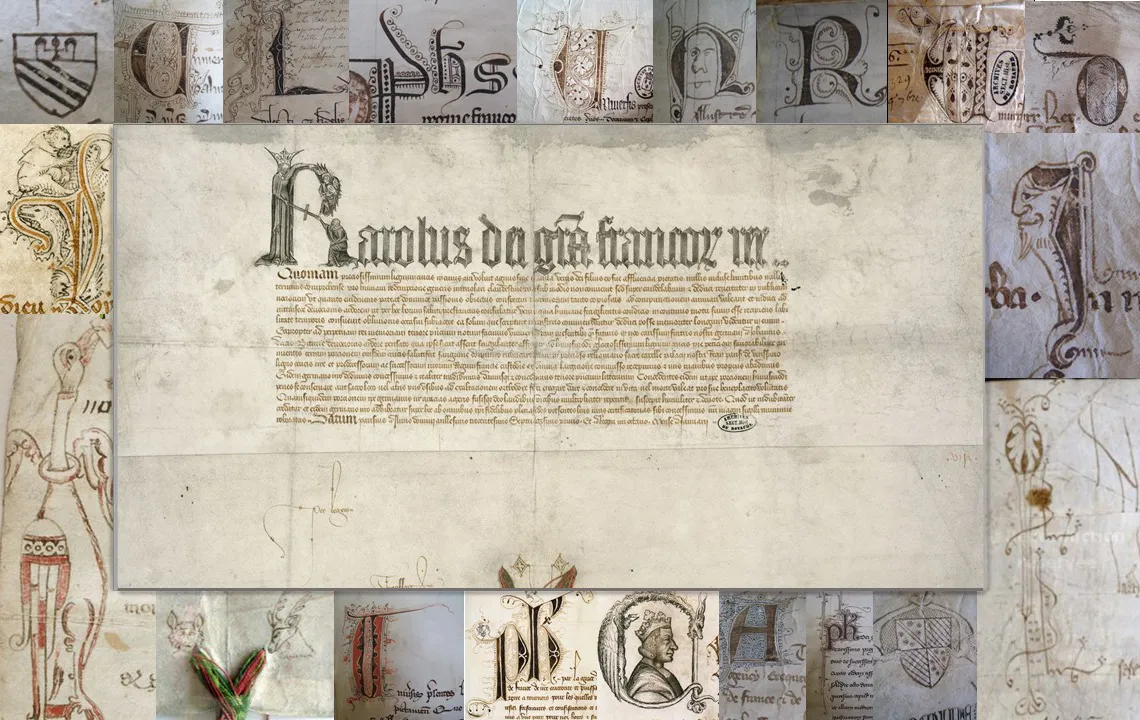
Power and Diplomacy. The Illuminated Charter in France 1160–ca. 1420
- Hosting organisations
- IMAFO - Institut für Mittelalterforschung, Abt. Schrift- u. Buchwesen
- Responsible persons
- Gabriele Bartz
- Start
- End
Only a very small minority of medieval charters, i.e. documents emitted by any ecclesiastic or laic authority, have been decorated with drawn or painted decorations. Of course, these decorations did not change the legal content, but they were intended to impress the viewers and to convince them of the importance of the issuers who usually commissioned them. The decoration of documents primarily served the aesthetic valorisation and the need for representation of elites.
The aim of the Power and Diplomacy project is to establish a preliminary history of illuminated charters in medieval France throughout a digital catalogue on the database monasterium.net. The chronological order of the individual data sets alone makes possible to observe the mutations of the decoration and to compare the corpus to illuminated documents from other european regions. A vast material collection of about 1 300 charters (12th to 15th centuries) will be treated with classical art historic methods: describing and classifying (iconography, layout, style). Being primarily an art history project, the Power and Diplomacy project requires, due to the nature of its source material, an interdisciplinary approach in which art historians, diplomatists and digital humanists work closely together.
A so-called glossary developed for a previous project allows creating multiple story lines to unveil the history of French illuminated charters (in particular beyond the pure chronology). The resource is modelled in SKOS ( https://www.w3.org/2004/02/skos/ ). It defines abstract questions and overarching aspects of the art historical description as concepts and gives an extensive description of the concept as plain HTML (rdf:parseType=“Literal”) in the definition of each concept. With the glossary tool, the digital resource will offer entry points on general questions on layout, iconography, development of decorative forms and stylistic groups.
A wide-range analysis of French illuminated charters will provide to the research community a considerable amount of precisely dated and localised illuminations, whose study might lead to revise our knowledge on art production in medieval France. The on-line and open access availability of a relevant amount of unpublished documents will provide scholars of art history, history, diplomatics, heraldry, palaeography and a wider public an access to a highly neglected type of sources.